Perspective 丨 Blockchain radical market and charity
The theme of this issue is "Aggressive Market and Charity" . The sharing guest is Hu Yuqing, the Chinese translator of "Aggressive Market".
The following is a full review of this AMA
What we want to explore in depth this evening is a new mechanism.
My name is Yuqing Hu. I graduated from Duke University's Department of Economics. I used to work for the World Bank. It is an international charity for poverty alleviation.
- A week in review: Bitcoin is close to $ 10,000, can the bull market be far behind?
- When DAO revived for a year, someone combed the global DAO
- Why can Bitcoin still rise after plunging again and again?
Recently joined RadicalxChange.org and learned about the blockchain for translating "The Aggressive Market" by Glen Weyl and Eric Posner. These days, an outbreak of atypical coronavirus pneumonia occurred in Wuhan, and seeing everyone donating one after another reminds me of the work done by my previous institution. So tonight I want to use this event to discuss with you the relationship between radical markets and philanthropy, and how the Quadratic Funding (QF), a secondary financing method I recently applied to blockchain, can effectively improve the current public utilities .

http://business.sohu.com/20121129/n359049855.shtml
The arguments in this article are both right and inadequate. Mr. Xue talked about the inefficiency of poverty reduction of the World Bank, which really made me reflect on its inefficiency. In contrast, Mr. Xue mentioned that "Harry Potter" sold 9 million copies of high-efficiency events in the United Kingdom and the United States in just one day, which is a bit similar to our Tmall turnover of 270 billion in Double 11
So does such high efficiency and such a huge number mean that we have truly achieved the greatest charity? I can only say that business benefits both the buyer and the seller of the transaction, and its positive results also create a greater potential space for charity. From this level, the phrase "business is the greatest charity" is true. of.
But business is not the same as charity because it is different in nature. Business has great social value, but in this case, it doesn't mean that we don't need the government, the World Bank and other charitable organizations and institutions.
The reason is simple. You only need to take a closer look at the different groups corresponding to the two cases in Mr. Xue's article to draw conclusions. First, in the first case, the World Bank-assisted group was African-American children and women struggling to fight malaria and dying at the death line, unable to engage in business activities. This is like the low-income patients who have been infected with atypical pneumonia in Wuhan these days and cannot afford high medical expenses.
And for the 270 billion that was traded on the day of Double 11, which one's profit ultimately came to their hands? The money initially flowed to the operators of Taobao stores. Many of them had fallen into poverty before. It was precisely because of the rise and development of e-commerce platforms that they were lifted out of poverty. Some of this money will flow to people who are unable to do commercialization but need help, such as full-time students, such as the old, the weak, and the disabled, guided by people's affection and kindness, and guided by the government and public institutions.
If there is only business and no other form of transfer payment, then the help of those who cannot participate in business and need to survive is far from enough. I will explain the reasons for this in the second part.
But business and charity have different natures. The essence of business is exchange and cooperation. It occurs between individuals or groups whose values are matched, and all participants are willing and able to do so. Due to the heterogeneity of social groups, some people will inevitably be unable to participate in business activities, and the groups that are not reachable by the market are the objects we need help.
So what is the greatest charity? My definition is that if there is a mechanism or market design that can inspire human good instead of human evil as much as possible to benefit as many people as possible, then it is considered the greatest charity. This design can be a company's business model, a regional market plan, or a country's public policy; it can be a two-party transaction or a unilateral subsidy with currency flows, or a game or game without money Operations Research.
Now I am going to enter the second part of our more important, do you have any questions?
"Aggressive Market" gives us a potential answer.
This is the address of the English version of the book: http://radicalmarkets.com/
The public number of the RadicalxChange Chinese community, introduces the content of the book: (Insert into a change)
First of all, the starting point of this book is a series of new challenges in today's world. Although the global economy has grown in recent decades, and the gap between countries has narrowed, inequality within countries has increased, and society Divergences and divisions with politics are also getting worse-the liberal market economy that once pride the Western world, especially the United States, is facing an unprecedented crisis. Change is imminent, but better alternatives than centrally planned economies have yet to emerge. Fortunately, today's technological advances, especially the rapid development of machine learning and artificial intelligence technologies in the context of big data, are quietly redefining social and production relations.
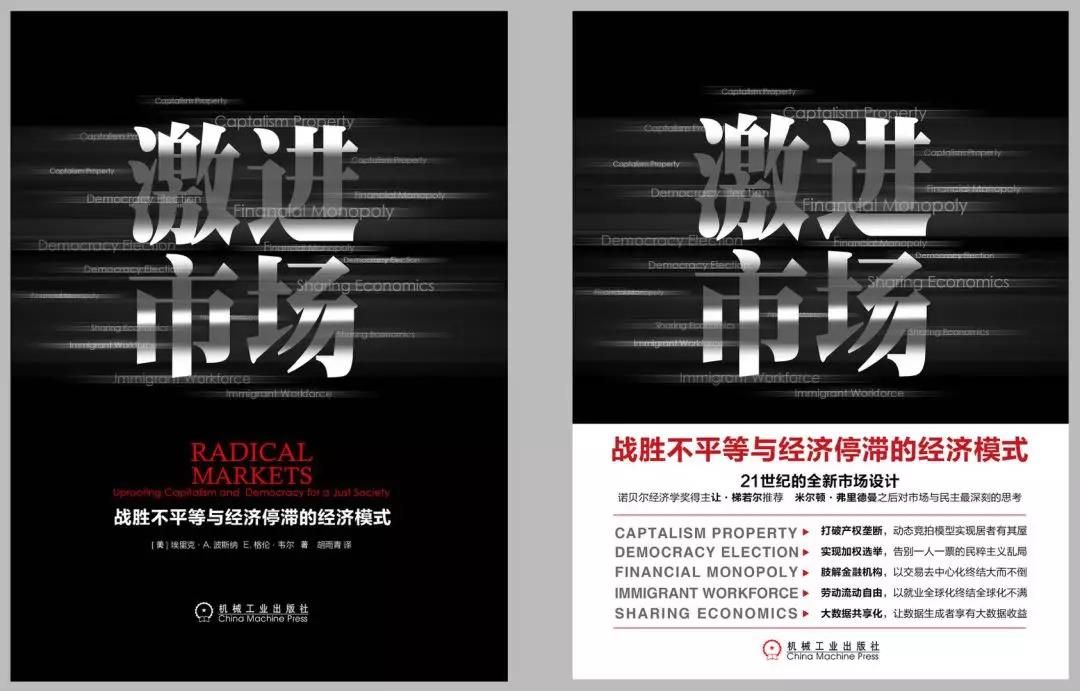
This makes the new system design feasible to a certain extent, including philanthropy. With the help of new technologies such as artificial intelligence and blockchain, it can break through the institutional barriers and have better solutions.
QV allows the square root of voters' votes to be converted into voting points, which more effectively affects the issues that are most important to them. This overcomes the problems of "many people's tyranny" under the "one person, one vote" system. Under QV, if a person is particularly concerned about one thing, he can consider spending more of his voice points on it, but he has to pay the quadratic price.
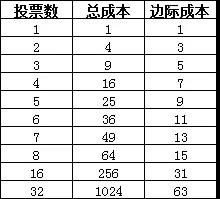
(An example of a blockchain is Ethereum's smart contract public chain platform EOS, which also emulates the one-person-one-vote democratic election system, but the vote rate is very low.)
For a series of QV papers, you can go to the Glen Weyl homepage to see:
http://glenweyl.com/research/
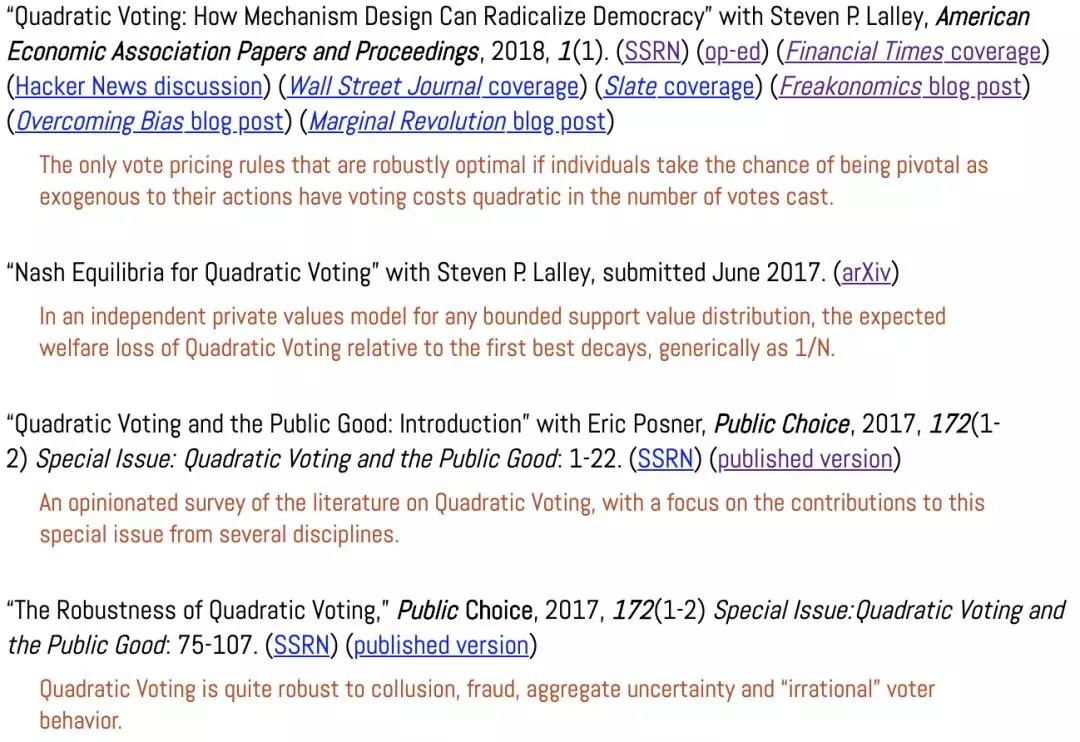
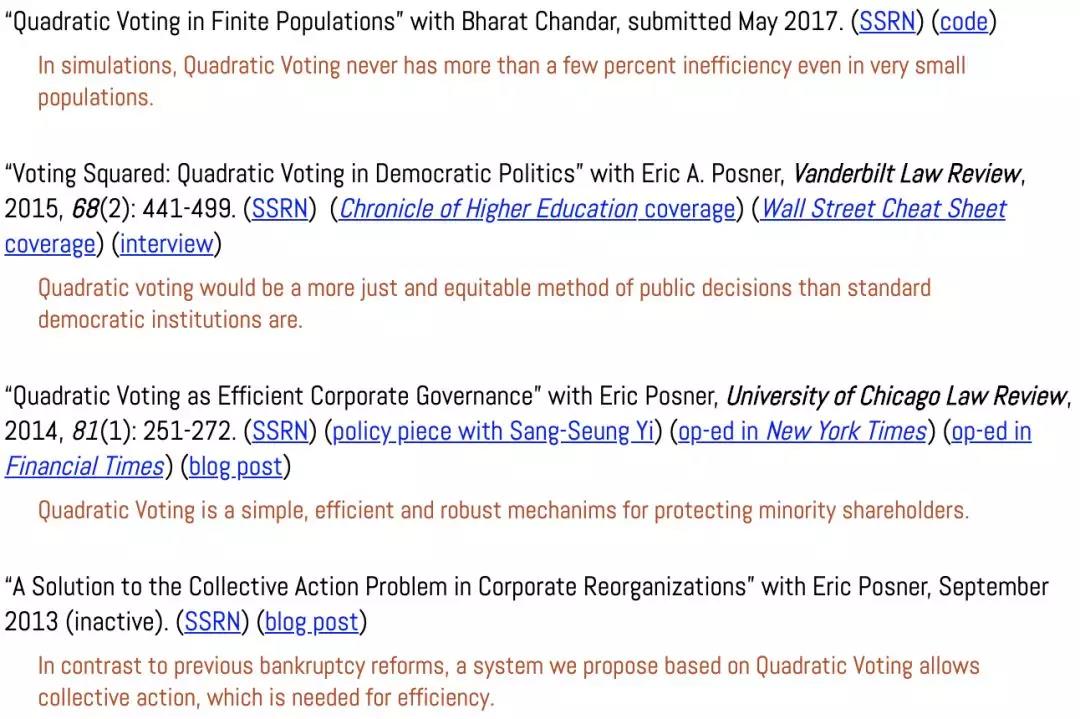
A derivative of QV is Quadratic Funding (QF), which is also the charity-related market design that we will focus on today. The word comes from a newer paper by Vitalik Buterin, Zoe Hitzig, and Glen Weyl:
The author's brief introduction: V God is the familiar founder of Ethereum, Zoe is a PhD student in Harvard University's Economics Department, Glen is the author of "Aggressive Market", Microsoft's chief economist, and the founder of RadicalxChange.
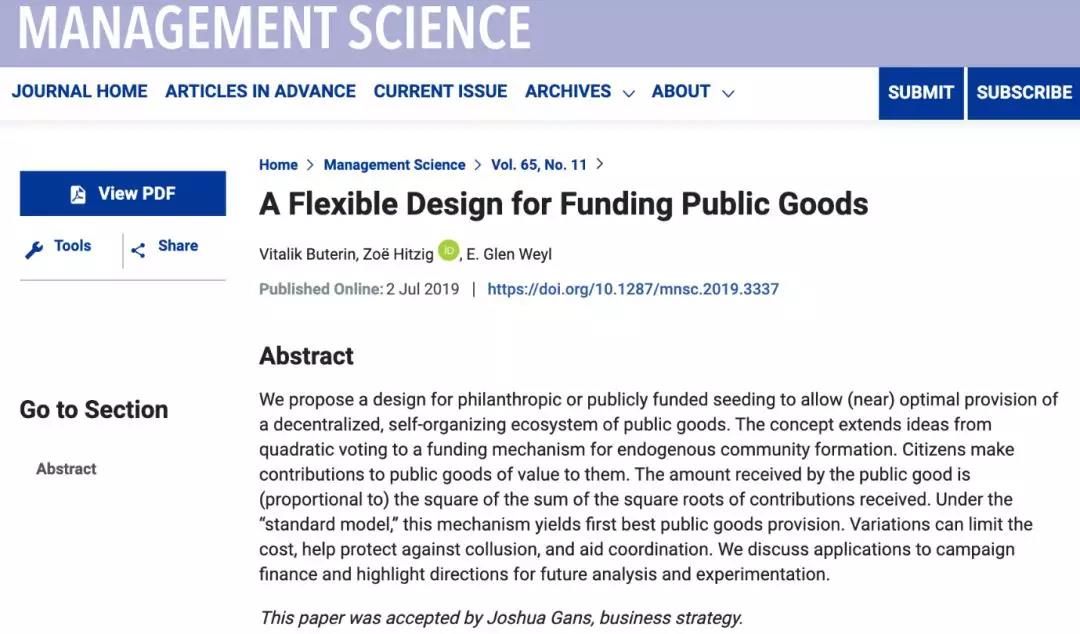
However, due to the non-competitive and non-exclusive characteristics of public goods, the phenomenon of free-riding and the problem of minority demand cannot be fully expressed, resulting in insufficient supply of public goods. Take another example of the outbreak in Wuhan. These days, the Wuhan incident has caused a sensation all over the world, but in other parts of the world, at this moment, some minorities may also need the same help, such as remote villages that also lack funds and health infrastructure, but because they are minority groups, So the voice of their needs was drowned, and they couldn't get the help and attention of the society; a more desperate situation is that they know that even if they say the needs, but because people talk lightly, only by their own power, this demand will hardly Seeing and being content, they simply chose silence.
Because of these characteristics of public goods, if there is a pool of funds such as a charitable foundation that can deliver materials to people or projects in need, it will greatly improve efficiency.
But there is another problem, how to allocate these funds to different projects?
The QF method proposed by the author, its goal is to maximize the total well-being of public goods (the utility of public goods minus the cost of fund inputs), rather than to achieve a fair distribution of resources among residents. This is also called "liberal radicalism" (LR) by the author.
Corresponding to this are "liberal individualism" and "liberal democracy." In liberal individualism, everyone has to pay and make a direct contribution to society, and everyone wants to maximize their own returns (personal benefits minus personal inputs). In this case, due to the non-exclusiveness and non-competitiveness of public goods, social welfare cannot be optimal. "Liberal democracy" is the other extreme, that is, the use of democratic voting to make public decisions that are effective for all.
QF-based liberal radicalism is a compromise between liberal individualism and liberal democracy. In fact, this is somewhat similar to the development trend of our society. Now everyone is operating the community. Liberal individualism is dominated by individual will, liberal democracy is dominated by collective or state will, and liberal radicalism is somewhat similar to group will dominated and divided.
Let's talk about the epidemic in Wuhan a few days ago. Different groups automatically organized donations. For example, we saw that blockchain practitioners organized a blockchain donation group themselves. Artificial intelligence practitioners had artificial intelligence donation groups, and stars also had Donations from celebrities, etc. By purchasing cryptocurrencies issued by the blockchain platform or using other cryptocurrencies to make donations, donating through the blockchain can not only remove the hidden dangers of misappropriation of charitable funds, remove suspicion of charities, but also expand donation channels and contribute to charity Development is a big help.
Blockchain technology has four advantages: decentralization, openness and transparency, information traceability, and automatic execution through smart contracts. Information related to charity projects can be distributed on each node of the blockchain network. On the chain, we can query and trace every transaction. Ideally, we can know who the recipient of each donation was, how it was used, how many times it was disbursed, how effective the rescue was, etc. In this way, the situation in which an organization or individual manipulates a charity project for their own benefit is prevented.
One of the biggest benefits is that the blockchain handles non-competitive resources in a way that deals with competitive resources. People can get rid of their dependence on trusted third parties and freely exchange digital currencies, intellectual property rights, equity and even in the digital world. Real estate ownership.
Now let's talk briefly about the third part. How can business that maximizes efficiency be integrated with public utilities such as charity? In fact, the business we are talking about is still talked about in the traditional financial world; the charitable innovations are talked about in the blockchain world. So I think the essence of this problem is how to integrate traditional finance with the blockchain, and how to coordinate centralization and decentralization.
Therefore, the advent of the blockchain is not to say that traditional finance has been completely revolutionized and subverted, but that it has transformed from a monopolistic, resource-dominant center and a strong intermediary to an open platform, becoming a service-oriented multi-center differentiation. In this way, the traditional intermediary center and the new intermediary center have a win-win situation.
What the blockchain realizes is a kind of trust transfer, which enables people's trust objects in the process of transactions and cooperation to be transferred from people and institutions to the consensus machine, the blockchain.
Blockchain is an idea. It is a collection of many open source projects. It is also a brainstorming "general ledger". Technology will be eliminated, inventions will become obsolete, and companies will go out of business, but distributed thinking will not.
We will continue to update Blocking; if you have any questions or suggestions, please contact us!
Was this article helpful?
93 out of 132 found this helpful
Related articles
- The industry should choose the blockchain, and the language should choose Go? 2020 Software Engineer Career Guide
- Bitcoin breaks $ 10,000 mark, halving effect or continued fermentation
- Perspective analysis 丨 the bottlenecks and solutions of staking projects
- $ 12,000! This is the lowest price for miners to continue to profit after halving
- Hardcore! Blockchain helps to warn of infectious diseases!
- Explain the centralization, distribution, decentralization, and state machines in Trisomy from the epidemic prevention and control
- Swiss authorities "no longer friendly" to cryptocurrencies? New regulations require crypto transactions over $ 1,000 to be reviewed






